
(a)
Interpretation:
The noncarboxyl
Concept Introduction:
Carbonyl groups are the one which contain a double bond between carbon and oxygen atom.

If a hydroxyl group is attached to a carbonyl group means it is known as carboxyl group. This can be represented as shown below,

Apart from carboxyl group, there can be other functional group also that is present in the
(b)
Interpretation:
The noncarboxyl functional group that is present in pyruvic acid has to be given.
Concept Introduction:
Carbonyl groups are the one which contain a double bond between carbon and oxygen atom. Aldehydes and ketones possess this carbonyl functional group in it. The structural representation of a carbonyl group can be given as shown below,
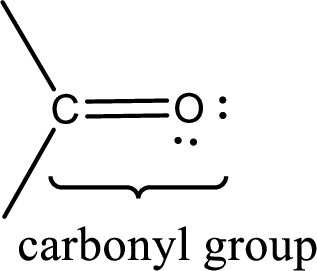
If a hydroxyl group is attached to a carbonyl group means it is known as carboxyl group. This can be represented as shown below,
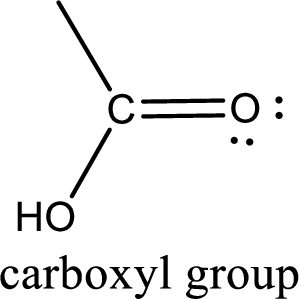
Apart from carboxyl group, there can be other functional group also that is present in the carboxylic acid. They are known as polyfunctional carboxylic acids. These occur naturally also. Some of the important type of polyfunctional carboxylic acids are hydroxy acids, keto acids, and unsaturated acids.
(c)
Interpretation:
The noncarboxyl functional group that is present in malic acid has to be given.
Concept Introduction:
Carbonyl groups are the one which contain a double bond between carbon and oxygen atom. Aldehydes and ketones possess this carbonyl functional group in it. The structural representation of a carbonyl group can be given as shown below,
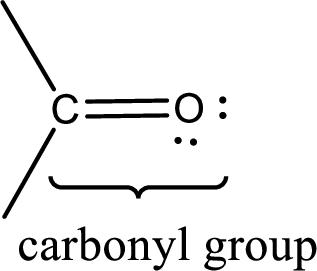
If a hydroxyl group is attached to a carbonyl group means it is known as carboxyl group. This can be represented as shown below,
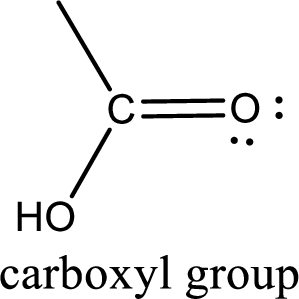
Apart from carboxyl group, there can be other functional group also that is present in the carboxylic acid. They are known as polyfunctional carboxylic acids. These occur naturally also. Some of the important type of polyfunctional carboxylic acids are hydroxy acids, keto acids, and unsaturated acids.
(d)
Interpretation:
The noncarboxyl functional group that is present in tartaric acid has to be given.
Concept Introduction:
Carbonyl groups are the one which contain a double bond between carbon and oxygen atom. Aldehydes and ketones possess this carbonyl functional group in it. The structural representation of a carbonyl group can be given as shown below,

If a hydroxyl group is attached to a carbonyl group means it is known as carboxyl group. This can be represented as shown below,
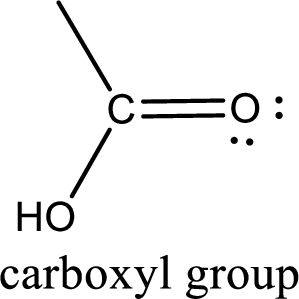
Apart from carboxyl group, there can be other functional group also that is present in the carboxylic acid. They are known as polyfunctional carboxylic acids. These occur naturally also. Some of the important type of polyfunctional carboxylic acids are hydroxy acids, keto acids, and unsaturated acids.
Want to see the full answer?
Check out a sample textbook solution
Chapter 5 Solutions
Organic And Biological Chemistry
- Instructions: Answer the following questions regarding the test for carboxylic acids.arrow_forwardTrue or False Liquid carboxylic acids have unpleasant odors. Lower molecular weight acids are odorless. The functional group OH-C=O can be part of a cyclic structure.arrow_forwardAcid Alcohol Odor Structure salicylic acid methanol wintergreen ? anthranilic acid methanol Grape ?arrow_forward
- Salicylic acid is added into a test tube, followed by methanol and sulfuric acid as the catalyst. It is heated for 10-15 minutes and poured into a beaker with crushed ice. This is the esterification of Oil of wintergreen. Write the complete reaction equation and describe the odor of the reactants (salicylic acid and methanol) and the products (oil of wintergreen).arrow_forwardWhat is the structure and Intermolecular forces of the following: A. Decanoic Acid B. Stearic Acid C. Benzoic Acid D. Salicylic Acidarrow_forwardWhat are the differences between the low carbon-containing carboxylic acid and the high carbon-containing carboxylic acid?arrow_forward
- Draw the organic product formed when these compounds undergo a substitution reaction butanoic acid and 2-propanol acetic acid and methylamine formic acid and 2-methyl-1-propanolarrow_forwardCarboxylic Acid Alcohol Ester (Condensed Structural Formula) Odo Formic acid Ethyl alcohol Rum Acetic acid Ethyl alcohol Fruity Acetic acid Isopentyl (isoamyl) alcohol Banana Acetic acid Octyl alcohol Orange Propionic acid Ethyl alcohol Pineapplearrow_forwardThe carboxylic acid compound is widely used as an antifungal agent a. oxalic b. benzoic c. salicylic d. aceticarrow_forward
- help with carboxylic acid reactionsarrow_forwardName the type of organic compound from the description of its functional group.Single- and double-bonded group that is acidic in water: Group of answer choices nitrile carboxylic acid aldehyde alkyl halidearrow_forwardDraw the formula for this carboxylic acidarrow_forward
 General, Organic, and Biological ChemistryChemistryISBN:9781285853918Author:H. Stephen StokerPublisher:Cengage Learning
General, Organic, and Biological ChemistryChemistryISBN:9781285853918Author:H. Stephen StokerPublisher:Cengage Learning Organic And Biological ChemistryChemistryISBN:9781305081079Author:STOKER, H. Stephen (howard Stephen)Publisher:Cengage Learning,
Organic And Biological ChemistryChemistryISBN:9781305081079Author:STOKER, H. Stephen (howard Stephen)Publisher:Cengage Learning,


